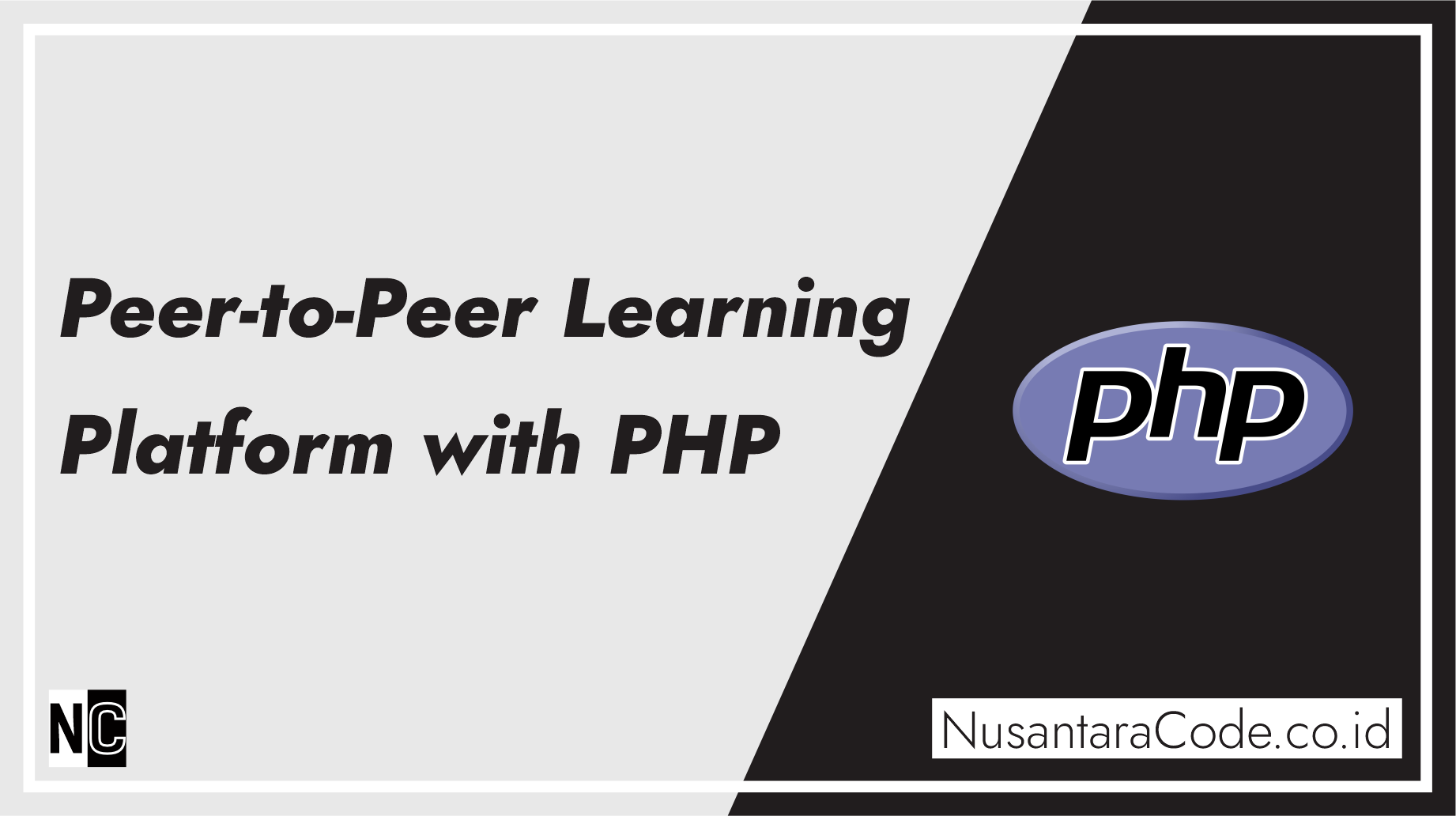In the dynamic landscape of education, fostering collaboration and peer-to-peer learning is a powerful way to enhance the educational experience. In this article, we’ll explore the concept of a Peer-to-Peer Learning Platform built with PHP, allowing students to connect, share knowledge, and engage in collaborative learning.
The Concept
A Peer-to-Peer Learning Platform enables students to connect with their peers for mutual learning, tutoring, and collaborative study sessions. This platform provides a space for students to share their expertise, seek help in challenging subjects, and build a supportive learning community.
Setting Up the Project
Step 1: Environment Setup
Before diving into the PHP code, ensure you have a web development environment set up. You can use tools like XAMPP, WampServer, or MAMP to set up a local server environment.
Step 2: Database Configuration
Create a MySQL database to store user information, messages, and other relevant data. Use the following SQL script as a starting point:
CREATE DATABASE peer_to_peer_learning;
USE peer_to_peer_learning;
-- Table for user information
CREATE TABLE users (
id INT AUTO_INCREMENT PRIMARY KEY,
username VARCHAR(255) NOT NULL,
password VARCHAR(255) NOT NULL,
email VARCHAR(255) NOT NULL
);
-- Table for messages
CREATE TABLE messages (
id INT AUTO_INCREMENT PRIMARY KEY,
sender_id INT,
receiver_id INT,
message TEXT,
timestamp TIMESTAMP DEFAULT CURRENT_TIMESTAMP,
FOREIGN KEY (sender_id) REFERENCES users(id),
FOREIGN KEY (receiver_id) REFERENCES users(id)
);Step 3: PHP Code Implementation
User Registration and Login (register.php)
<?php
require_once('db.php');
if ($_SERVER['REQUEST_METHOD'] === 'POST') {
$username = $_POST['username'];
$password = password_hash($_POST['password'], PASSWORD_BCRYPT);
$email = $_POST['email'];
$stmt = $conn->prepare('INSERT INTO users (username, password, email) VALUES (?, ?, ?)');
$stmt->bind_param('sss', $username, $password, $email);
if ($stmt->execute()) {
echo 'Registration successful';
} else {
echo 'Registration failed';
}
$stmt->close();
}
$conn->close();
?>User Login (login.php)
<?php
require_once('db.php');
if ($_SERVER['REQUEST_METHOD'] === 'POST') {
$username = $_POST['username'];
$password = $_POST['password'];
$stmt = $conn->prepare('SELECT id, password FROM users WHERE username = ?');
$stmt->bind_param('s', $username);
$stmt->execute();
$stmt->bind_result($user_id, $hashed_password);
$stmt->fetch();
if (password_verify($password, $hashed_password)) {
echo 'Login successful';
} else {
echo 'Login failed';
}
$stmt->close();
}
$conn->close();
?>Sending and Receiving Messages (messages.php)
<?php
require_once('db.php');
if ($_SERVER['REQUEST_METHOD'] === 'POST') {
$sender_id = $_POST['sender_id'];
$receiver_id = $_POST['receiver_id'];
$message = $_POST['message'];
$stmt = $conn->prepare('INSERT INTO messages (sender_id, receiver_id, message) VALUES (?, ?, ?)');
$stmt->bind_param('iis', $sender_id, $receiver_id, $message);
if ($stmt->execute()) {
echo 'Message sent';
} else {
echo 'Failed to send message';
}
$stmt->close();
}
if ($_SERVER['REQUEST_METHOD'] === 'GET') {
$user_id = $_GET['user_id'];
$stmt = $conn->prepare('SELECT * FROM messages WHERE sender_id = ? OR receiver_id = ? ORDER BY timestamp ASC');
$stmt->bind_param('ii', $user_id, $user_id);
$stmt->execute();
$result = $stmt->get_result();
$messages = $result->fetch_all(MYSQLI_ASSOC);
echo json_encode($messages);
$stmt->close();
}
$conn->close();
?>Building a Peer-to-Peer Learning Platform with PHP opens up possibilities for collaborative education. This project, though basic, serves as a foundation that can be expanded with additional features such as user profiles, discussion forums, and real-time messaging. As you explore this concept further, consider incorporating JavaScript for a more interactive and dynamic user experience. Happy coding!
